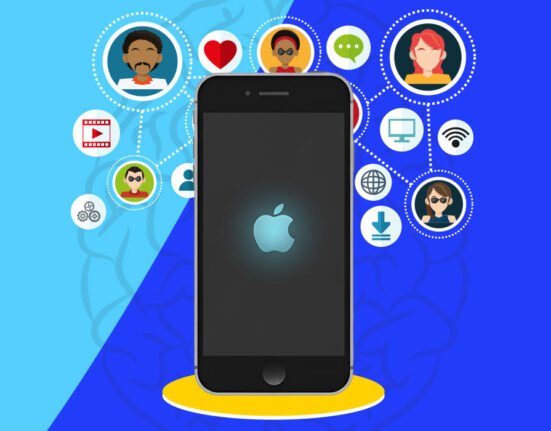Achieving a goal often means creating a new routine and sticking to it. Whether it’s networking more, taking on more consulting work, waking up earlier, or exercising regularly, forming habits is key. Changing your schedule can be unsettling and inconvenient. Life can get in the way, and it’s tempting to make excuses for breaking your habit. That’s why some scientists focus on understanding what influences human behaviour. If we understand how we naturally respond to our actions, we can increase our chances of ongoing success.
1. Identifying Triggers
Identify what sets off (triggers) your habits. In “The Power of Habit,” Charles Duhigg explains a basic loop in every habit: “cue,” “routine,” and “reward,” discovered by MIT researchers. To establish a regular habit, have a consistent reminder (cue). Set an alarm if you’re aiming for a specific time, and choose a consistent location. Places you frequently visit can also trigger habits (e.g., sitting on the couch triggers the desire to watch TV). People around you can serve as cues too. Surround yourself with those who already exhibit the behaviour you want.
Read More: Top 10 Books on Productivity and Time Management
Repeatedly act on cues to establish your routine. Once immersed, enjoy the rewards that come from sticking to your intentions.
1.1 Five Important Triggers To Keep A Note Of Charles Duhigg (2012) outlines a basic three-step pattern common to all habits. This is also called the Habit Loop or the Three R’s.
- The Reminder: It is the cue/trigger/reminder that is the starting point of the habit, and is the event that kicks it off.
- The Routine: This is the actual behaviour, the habit itself, that you engage in.
- The Reward: The positive outcome linked to the behaviour, the benefit you gain.
Studies have often discussed five important triggers that can help an individual set off or start a habit. All habit loops kick off with a cue, the thing that sets the entire process in motion. Recognizing your cues/triggers is crucial for developing successful habits. We will discuss them in detail below
Trigger #1: People
Have you noticed how your behaviour changes around certain individuals? Peer pressure persists into adulthood as well. We adapt to fit in with those around us. Your habits are influenced by your associates. Research (Christakis & Fowler, 2007) even shows that if your friend becomes obese, your risk of obesity increases by 57 per cent. Therefore, it becomes necessary to surround oneself with people who have the habits you desire. Build relationships with those who already have the habits you want. If you aim to start working out, connect with someone who already goes to the gym or hire a personal trainer. Understand your values to know the type of people you want to be around.
Read More: How to Increase your Productivity when you are Depressed?
Trigger #2: Emotions
When you’re feeling low, do you turn to comfort food? Maybe boredom prompts you to scroll through social media, or feelings of joy lead to indulging in a celebratory drink or two. In each case, your emotional state serves as the cue for the habit. While emotions commonly trigger behaviour, harnessing them for positive habits can be challenging. To use emotions as cues for good habits, you often need to be consciously aware of them in the moment. It’s a powerful but challenging way to build better habits.
Trigger #3: Preceding Events
Many habits are set off by something that happens just before – either an action you take or an external event. It could be buckling your seatbelt when you enter your car, grabbing your phone when it vibrates, or craving a cigarette after a meal. These habits are responses to events that precede them. Useful for building new habits, preceding events are among the most effective triggers. Understanding habit stacking allows you to link new habits to events. Leveraging events is one of the simplest ways to form positive habits. Habit stacking involves adding your new habit on top of an existing one, capitalizing on the natural momentum that leads from one behaviour to the next.
Read More: 4 Productivity Myths to Stop Believing in
Trigger #4: Environment
Throughout the day, you respond to habit cues in your surroundings—whether at home, work, the gym, or in your car. The environment is a combination of other triggers like time, preceding events, and specific people, creating a potent and challenging-to-break trigger. For good habits, shape a supportive environment. The path of least resistance is the easiest to follow, so set up your environment for success. Recognize your triggers and their impact on behaviour. Once acknowledged, create an environment that fosters success habits. The power of location is often underestimated, influencing mindless habits. Habits can be assigned to specific locations mentally, making it easier to perform new habits in new places.
Trigger #5: Time
Time isn’t just about the hour—it could be a specific day or special dates triggering habits. Morning routines are a classic example, where waking up sets off a sequence of habits: bathroom, shower, teeth brushing, getting dressed, making coffee, and more. Less recognized are the subtle ways time influences behavior. You might notice repeating tasks at specific times, like grabbing a snack each afternoon or taking a smoking break every morning. If these are bad habits, assess how you feel at those times. Understanding the why behind these habits makes it easier to find new ones. Remember, bad habits are replaced, not eliminated.
Read More: The Psychology of Procrastination: strategies to boost Productivity
2. Address One Habit At a Time
Address one habit at a time. Trying to change multiple routines simultaneously increases the likelihood of failure. Research (Clear, n.d.) indicates a 2 to 3 times higher success rate when individuals make specific plans for when, where, and how they’ll perform a behavior. These plans, termed “implementation intentions,” significantly boost commitment. It’s crucial to grasp that these intentions are effective only when concentrating on a single goal. To enhance your chances of following through, develop a precise plan for sticking to a new habit while focusing on one goal.
3. Leveraging One Habit with Another
Build new habits by stacking them on top of existing ones. Your current habits, like showering or making coffee, won’t hinder the establishment of new routines. Leverage the neural pathways already developed in your brain by “stacking” habits. For instance, if you aim to practice gratitude regularly, associate it with your morning coffee routine. No need to forge a new path when you can follow an existing one.
4. Goals and Habits are Different
It becomes important to understand the difference between habits and goals. Separate your habit from your long-term goal. Instead of fixating on the ultimate objective, consider each successful completion of your habitual task as a victory on its own. Concentrate on consistent practice—this is the routine aspect of the habit loop. Don’t anticipate immediate, significant results, whether in fitness or any other goal. Emphasize the ritual, not the outcome. With time, the process will become ingrained, and the desired results will naturally follow.
Read More: The Connection between Sleep and Productivity
5. Simplify the Process and Make it Easy
This simply means that the first step to build a habit should be to make the task easy for yourself. If you want to build the habit of going to the gym, make the entire process of going to the gym easier by preparing for it (laying your gym bag beside the door) earlier. You can also try and sleep in your gym clothes, which will remove one more hindrance or obstacle out of your way and remove many reasons for you to not follow through and go to the gym. In a study (Houten et al., 1981), adjusting elevator door timing to create a short delay led people to prefer taking the stairs, showcasing our sensitivity to small environmental changes.
6. Rewards and Reinforcement
You don’t have to reward yourself with external gifts (although that could work). Your brain has its own reward system. Every time you complete a task on your to-do list, your brain releases dopamine, a hormone linked to pleasure, learning, and motivation. This is what gives you a sense of achievement when you accomplish something you planned to do. The pursuit of more dopamine motivates you to repeat the task.
Read More: How to Boost Your Productivity with Pomodoro Technique
7. Avoid or Minimize Decision Making
Decision-making can be draining, leading to what’s known as decision fatigue. A study (Vons et al., 2008) in the Journal of Personality and Social Psychology revealed that participants experienced reduced self-control, lower physical stamina, decreased persistence, and increased procrastination after making multiple decisions (decision fatigue).
To combat decision fatigue, simplify your routine and limit choices wherever possible. For example, if you aim to read more, create a short list of books or articles, and prioritize them. Avoid the overwhelm of choosing from your entire bookshelf each time you want to read. By minimizing choices in various aspects of your life, you preserve mental energy for activities you’re working to turn into habits.
Besides these seven strategies, many more ways can aid you in building good and successful habits. These seven strategies can be the starting point for anyone who plans to improve their lifestyle by building helpful habits.
Read More: Productivity Anxiety Decoded: Reasons, Symptoms, Overcoming
References +
- Christakis NA, Fowler JH. The spread of obesity in a large social network over 32 years. N Engl J Med. 2007 Jul 26;357(4):370-9. doi: 10.1056/NEJMsa066082. Epub 2007 Jul 25. PMID: 17652652.
- https://www.entrepreneur.com/business-news/5-triggers-that-make-new-habits-stick/243374
- https://mooremomentum.com/blog/5-powerful-habit-triggers-and-how-you-can-use-them-to-create-more-successful
- https://www.entrepreneur.com/business-news/the-scientific-argument-for-mastering-one-thin g-at-a-time/280315
- Houten, R. V., Nau, P. A., & Merrigan, M. (1981). REDUCING ELEVATOR ENERGY USE: A COMPARISON OF POSTED FEEDBACK AND REDUCED ELEVATOR CONVENIENCE. In
- Journal of Applied Behavior Analysis (Vol. 14, Issue 4, pp. 377–387). Wiley.
- https://doi.org/10.1901/jaba.1981.14-377
- https://www.nytimes.com/2020/02/18/well/mind/how-to-build-healthy-habits.html
- Vohs, K. D., Baumeister, R. F., Schmeichel, B. J., Twenge, J. M., Nelson, N. M., & Tice, D. M. (2008). Making choices impairs subsequent self-control: A limited-resource account of decision making, self-regulation, and active initiative. Journal of Personality and Social Psychology, 94(5), 883–898. https://doi.org/10.1037/0022-3514.94.5.883













Leave feedback about this